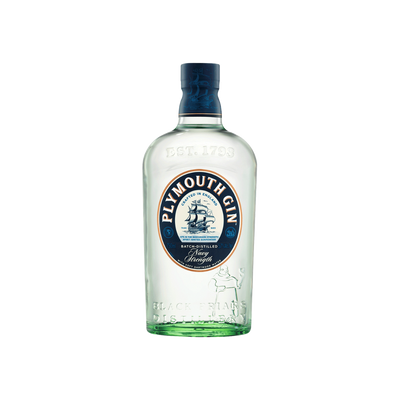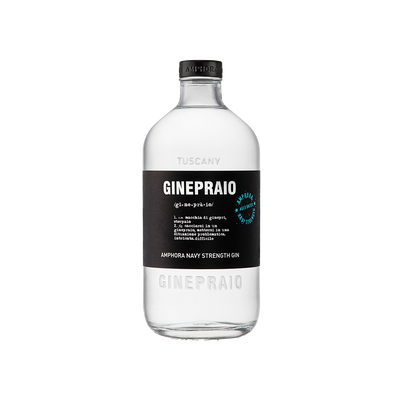Navy Strength Gin
What is Navy Strength Gin?
Navy Strength Gin is a specific type of Gin that clocks in at a robust 57% ABV (114 proof), considerably stronger than standard gins which typically sit around 40-47% ABV. This higher proof classification gets its name from British Royal Navy tradition, where spirits had to be strong enough that if accidentally spilled on gunpowder, the powder would still ignite. The extra alcohol content doesn't just pack more punch – it also carries botanical flavors more intensely, making these gins particularly excellent for cocktails where you want the gin's character to shine through even when mixed with other strong ingredients.
Learn More About Navy Strength Gin
What makes Navy Strength Gin unique?
Navy Strength Gin stands apart from regular gin with its bold 57% ABV (114 proof), nearly double the strength of most standard gins that clock in around 40% ABV. This higher alcohol content wasn't just for show – it had to pass the gunpowder test, meaning if the gin accidentally spilled on gunpowder aboard Royal Navy ships, the powder would still ignite, proving the spirit was strong enough to be considered legitimate navy rations. The intense alcohol backbone amplifies the botanical flavors, creating a more concentrated and robust flavor profile that can stand up to strong mixers and won't get lost in cocktails the way lighter gins might.
How is Navy Strength Gin made?
Navy Strength Gin follows the same production process as regular gin, with distillers steeping juniper berries and botanicals in neutral grain spirit before distillation, but the key difference lies in the final bottling strength. After distillation, the gin is diluted with water to reach exactly 57% ABV (114 proof) rather than the standard 40-47% ABV found in most gins. This higher proof was historically necessary because it had to pass the gunpowder test – if the gin accidentally spilled on gunpowder aboard Royal Navy ships, the powder still needed to ignite, proving the spirit was strong enough to be considered "navy strength."
How do you drink Navy Strength Gin?
Navy Strength Gin, with its robust 57% ABV, is primarily designed for cocktails where you want the gin to stand up boldly against other strong flavors. Its high proof makes it perfect for classic stirred drinks like Negronis, Martinis, and Aviation cocktails, where the extra strength won't get lost among vermouths, liqueurs, or citrus. While some adventurous drinkers might sip it neat or on the rocks to appreciate its concentrated botanical intensity, most people find Navy Strength too potent for straight consumption—it's really built to be the backbone of serious cocktails that need a gin with backbone.
How do I choose a good Navy Strength Gin?
When selecting a Navy Strength gin, start by considering your intended use—if you're mixing cocktails like a Negroni or Gimlet that need to stand up to other bold ingredients, look for gins with robust botanical profiles featuring prominent juniper and spice notes. For sipping neat or in spirit-forward drinks, seek out bottles with more balanced, complex flavor profiles where the higher proof amplifies rather than overwhelms the botanicals. Always taste before committing to a full bottle if possible, as the intense alcohol content can vary dramatically in how it carries the botanical flavors from distillery to distillery.
Nutritional Information
Typical Calorie Range per Ounce: 64-70 calories
Typical Carbohydrate Range per Ounce: 0-0.1 grams
Typical Sugar Range per Ounce: 0 grams
Typically Gluten Free: Yes
Navy Strength Gin packs more alcohol punch at 57% ABV compared to standard gin's 40%, which means slightly higher calories per ounce. The distillation process removes gluten proteins from grain-based spirits, making most gins naturally gluten-free. That said, production methods vary between distilleries, and some brands may introduce gluten-containing ingredients during flavoring or processing. Always check the specific product label and manufacturer information to confirm gluten-free status, especially if you have celiac disease or severe gluten sensitivity.
Scrolled this far? Your reward? Navy Strength Gin Trivia!
- The gunpowder test was real—and dangerous. British naval officers actually mixed gin with gunpowder and tried to ignite it to verify alcohol strength. If the mixture caught fire, the gin was "proof" (57% ABV minimum). Too weak, and the soggy powder wouldn't light, meaning sailors were getting watered-down spirits. This literally explosive quality control method gave us the term "100 proof" and explains why navy strength gin could theoretically blow up your bar cart.
- It wasn't about getting sailors drunk—it was about keeping gin from going bad. Higher alcohol content acted as a natural preservative during long ocean voyages. Regular gin would spoil or lose potency in the ship's hold, but navy strength stayed stable for months. The Royal Navy needed their daily gin rations to remain consistent, not just for morale, but because gin was mixed with lime juice to prevent scurvy. Weak gin meant weak medicine.
- Navy strength gin makes cocktails that actually taste different, not just stronger. The extra alcohol doesn't just add kick—it changes how botanical oils dissolve and how flavors bind together. Juniper and citrus oils become more pronounced, while sugar and vermouth react differently. A navy strength martini isn't just a stronger martini; it's chemically a different drink with more aggressive botanical expression and a completely altered mouthfeel.
- Modern navy strength gin often exceeds historical naval requirements by accident. Many contemporary distillers aim for 57% ABV because that's the "traditional" strength, but historical records show British naval gin often ranged from 54-58% depending on the distillery and storage conditions. Some craft distillers now push their navy strength gins to 60% or higher, creating spirits that would have made 18th-century sailors question their life choices.
- The style nearly disappeared until bartenders rescued it in the 2000s. After World War II, navy strength gin became almost extinct as consumers preferred lighter spirits. Only a few distilleries kept making it, mostly for export. Then cocktail culture exploded, and bartenders discovered that navy strength gin could stand up to bold mixers and create drinks impossible with standard-proof spirits. What was once a military necessity became a craft cocktail secret weapon.
Higher-proof spirits can be intense. Mix carefully, taste thoughtfully, and enjoy responsibly.
Gift message (optional)



